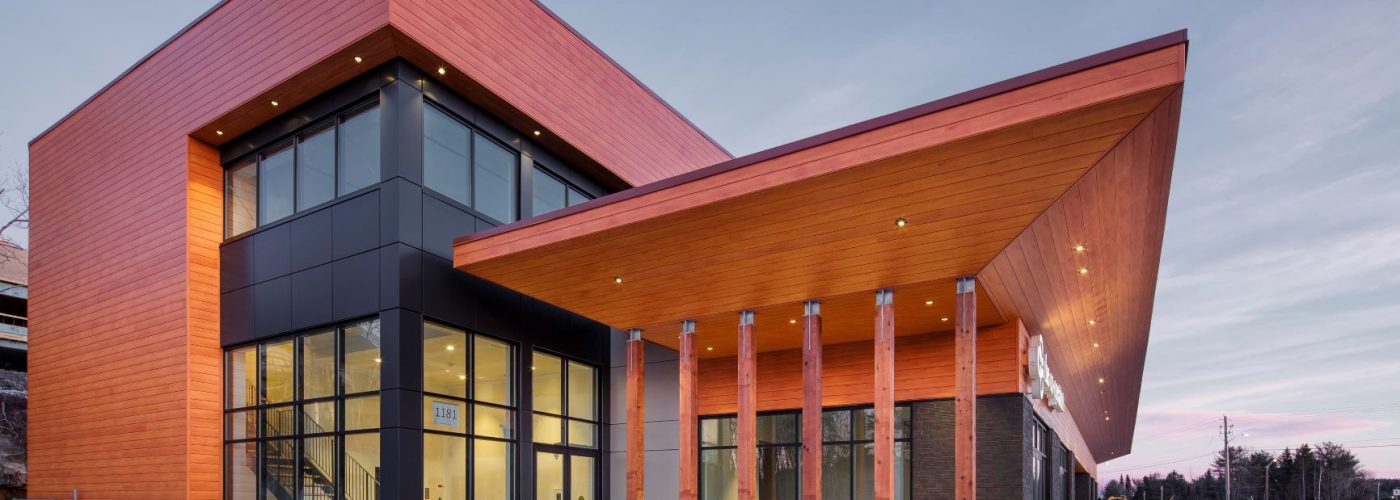The benefits of using aluminium in residential modular builds
Equivalent to the height of the London Eye, 101 George Street is home to the world’s tallest modular towers. Located in Croydon, UK and scaling 135 meters, the towers house 546 ‘build to rent’ properties. Residential builds like these are leaving a significant impression on the UK cityscape, but the industry must assess how buildings can stand tall while delivering quality. Nick Cowley, managing director at aluminium building product supplier Endurawood, explains why architects should turn to aluminium.
Standing at 38 and 44 stories, 101 George Street represents a future for modular builds, one that reaches heights far greater than the cabins and temporary constructions commonly associated with offsite construction. The onsite construction team consisted of around 150 workers, far less than the 450 builders and contractors you’d find on a traditional site for a building of this size.
Yet, despite there being less men on the ground, 101 George Street’s completion averaged roughly 1.3 floors each week — with the entire project delivered in just 26 months. For modular projects of this scale to become an industry norm, material choice must play a key role in delivering attractive, safe and efficient buildings.
Design capabilities
High rise buildings can have an undeserved reputation for appearing run down and dated. A culprit for this assumption is often corrosion and surface damage that occurs in difficult to maintain areas, with material choice at the heart of the issue.
Most of us will be familiar with corrosion in the form of rust, which specifically affects iron-based materials that can be used for cladding and balcony railings. This formation of oxide occurs when the iron reacts with oxygen or sulphates. Rust damages the physical and mechanical properties of the material and requires maintenance to restore it.
When corrosion sets in, the surface of the metal begins to change colour, although the base metal remains unaffected. This rust can run and drip, leaving large and undesirable stains on a building’s cement. In later stages of corrosion, holes can begin to appear and pitting can cause large holes in the affected area, which will require a complete replacement.
While maintenance can fix these issues, selecting a durable material like aluminium can prevent them from happening altogether. Aluminium resists corrosion from environmental factors such as pollution and harsh weather conditions because of the natural layer of aluminium oxide that forms on its surface. This means it requires less work to maintain its appearance, helping it to look newer for longer.
In addition, aluminium is strong and ductile enough to be used for numerous design features including cladding, decorative facades and soffits. These features can be used to accentuate a specific part of the building, adding an eye-catching twist to the building’s design. As a result, architects can fulfil their modular design requirements with a material that’s built to last.
Assuring safety
Like all buildings, safety is a crucial feature that must be guaranteed when planning, designing and constructing a modular build. Particularly for residential buildings that could house hundreds of people, using safe materials is more important than ever.
Aluminium is a non-combustible material and is classified by European regulations as Class A1, signifying “no contribution to fire”, the highest reaction to fire rating for construction products. Although it is not fireproof when exposed to extreme temperatures, aluminium acts as a flame retardant when it starts to melt. This reduces the potential of further damage to the building and to occupants in the event of a fire.
Using aluminium can also increase safety on the modular build assembly site. As aluminium is lighter than traditional building materials such as timber and steel, it’s easier to install and manage on site. This helps to improve the safety of those working on the project, while ensuring the faster completion time that modular builds are renowned for.
Greater thermal efficiency
The quality-controlled environment that modular builds are manufactured in makes them more thermally efficient compared to traditionally built structures. This is because the modules are quality checked at each stage of the production line, eliminating inefficiencies before they’re sent to the assembly site. Modular builds are also bolted together, making them more airtight and reducing heat loss.
The thermal efficiency of a modular build can be elevated with aluminium, which retains heat. Besides improving living conditions and energy efficiency for the occupant, it will also keep running costs down.
Aluminium can be applied to the internal structure and exterior of a modular build to enhance its thermal efficiency. Endurawood is made from 100 per cent marine grade aluminium and can be used for multiple applications to improve the thermal efficiency of residential modular projects, from small scale refurbishments to new build developments. These include battens, railings and exterior cladding, which acts as a barrier to prevent cold air from entering.
While 101 George Street demonstrates the rising potential of the modular construction industry, it’s important that all residential modular builds are optimised to consider safety, comfort and costs for the occupants. Using a multi-beneficial material such as aluminium can ensure builders go above and beyond for those living in the modular build.
For more information about how Endurawood can be used in residential applications, visit www.endurawood.co.uk/residential-construction/.





